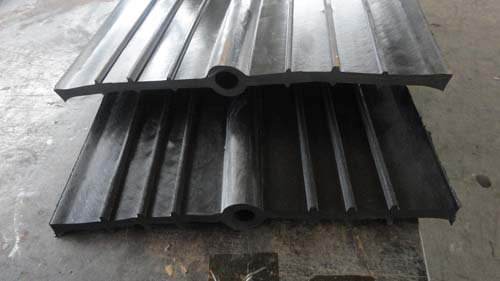Standard Practice for Construction Joint of CP Type Rubber Waterstop Hello everyone, today I introduce you to the CP type rubber waterstop. This belt type belongs to the middle-buried rubber waterstop and the other is the CB rubber waterstop. The scope of the two is different. The water belt is generally a CP type rubber waterstop (that is, the middle buried type non-porous type). The deformation joint water stop belt is generally a CB type rubber water stop belt (that is, a middle buried type hole type). Construction joints are a hidden danger of water seepage and should be minimized. We often use waterstops to deal with construction joints. What are the steps and methods for handling construction joints with waterstops? What is construction joint? Because the joint surface formed by successive pouring of concrete is prone to various hidden dangers and quality problems, different structural engineering needs to be cautious in handling the construction joints. Construction joint: A seam that is left between the construction unit sections due to the needs of the construction organization. The construction joint is not a real “seamâ€. It is only because the post-cast concrete exceeds the initial setting time, and there is a joint surface between the concrete and the first poured concrete. This combination is called the construction joint. CP type rubber waterstop construction joint construction method and steps: A φ8 steel hole is drilled every 0.5 to 1.0 m along the axis of the invert lining. Pass the finished steel bar through the stop plate template, the inner side is fastened to the water stop half, and the other half of the CP type rubber water stop is placed on the stop plate. After the concrete is solidified, the stop plate is removed and the water stop belt is pulled. Straight, then bend the steel bar tightly to the water Set water-expanding water stop strip in the construction joint; (b) external sealing water stop; (c) CP type rubber water stop belt Before pouring concrete after construction, it is very important to clean the surface of the concrete in the early stage. Because of the long time difference between the two pourings, many impurities and fine sand are left on the surface. If the cleaning is not clean, it becomes the isolation layer and becomes the water seepage channel. The CP-type rubber waterstop should be used for the buried waterstop, but the thickness of the wall is required to be no less than 30cm. The above is the introduction of the construction method and steps of the CP type rubber waterstop for the construction joints. I hope that everyone can better handle it after reading it. Wear Parts,Hard Metal Special Wear Parts,Carbide Special Wear Parts,Hardmetal Special Wear Parts Zhuzhou Jingfeng Carbide Tools Co., Ltd , https://www.zzjfcarbide.com
What are the steps and methods for handling construction joints with waterstops?
What are the steps and methods for handling construction joints with waterstops?